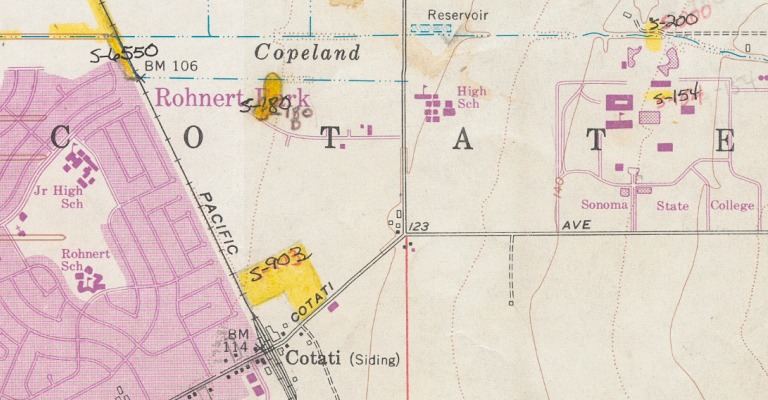Cultural Resources Inventory
Resources
Cultural resources is a term which encompasses prehistoric/historic archaeological sites and the built environment. The resources encompass historic sites, buildings, structures, objects, districts, and landscapes.
Since its inception in the early 1970s, the NWIC has been a fundamental source of archaeological information. In 1993, the NWIC acquired built environment information which was previously maintained only at OHP. The NWIC now maintains the most extensive cultural resources information base available for Northwest California.
- Over 22,000 records of prehistoric and historic-period archaeological resources
- Over 34,000 records for the built environment
- More than 50,000 cultural resource studies, with an average of 3,000 new reports and records received each year
- Database of study reports and resource records
- OHP Built Environment Resources Directory, including National Register records (cultural resources included in the National Register of Historic Places); California Register (cultural resources included in the California Register of Historical Resources); California State Historical Landmarks; and California State Points of Historical Interest
- OHP Archaeological Determinations of Eligibility (archaeological resources assessed by OHP staff with respect to National Register eligibility)
- California Inventory of Historic Resources (OHP 1976)
- Reference library consisting of publications in archaeology, ethnography, history and early atlases
- Historic maps (Sanborn, Coast Survey, and others)
- Hundreds of historic USGS topographic maps
- General Land Office survey and Rancho Plats (now in digital format)
- Bureau of Land Management mineral and mining survey plats
- Local Histories
- Periodicals
- Local thematic histories (e.g., railroad industry, salt industry, rural schoolhouses, etc.)
Definition of Terms
Site
Location of a significant event, a prehistoric or historic occupation or activity, or a building or structure, whether standing, ruined, or vanished, where the location itself possesses historic, cultural, or archaeological value regardless of the value of any existing structure.
Building
Those constructions created principally to shelter any form of human activity, or a historically and functionally related unit.
Structure
Those functional constructions made usually for purposes other than creating human shelter.
Object
Those constructions that are primarily artistic in nature or are relatively small in scale and simply constructed. Although it may be, by nature or design, movable, an object is associated with a specific setting or environment.
District
A significant concentration, linkage, or continuity of sites, buildings, structures, or objects united historically or aesthetically by plan or physical environment.
Landscape
A geographical area that historically has been used by people, or shaped or modified by human activity, occupancy, or intervention, and that possesses a significant concentration, linkage, or continuity of areas of land use, vegetation, buildings and structures, roads and waterways, and natural features. National Register Bulletin 30, p.1-2).
Definition of terms (except landscape) excerpted from:
Instructions for Recording Historical Resources Office of Historic Preservation, January 1995 (PDF).


